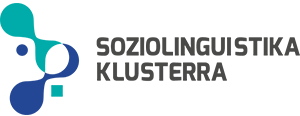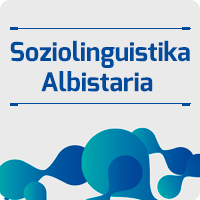Uztailaren 13tik 16ra, Ganteko Unibertsitateak antolatutako 24. Soziolinguistics Symposium-ean parte hartu du Soziolinguistika Klusterrak. Mundu mailako soziolinguisten topaketa nagusia da berau. Aukera bikaina da hizkuntzaren eta gizartearen gaineko ikerketa-emaitza berrienak eta ideiak partekatzeko eta garatzeko. Ehundaka parte-hartzaileren eta hizlariren artean, elkar ezagutzeko eta elkarlanerako aukerak aztertzeko parada ere bada.
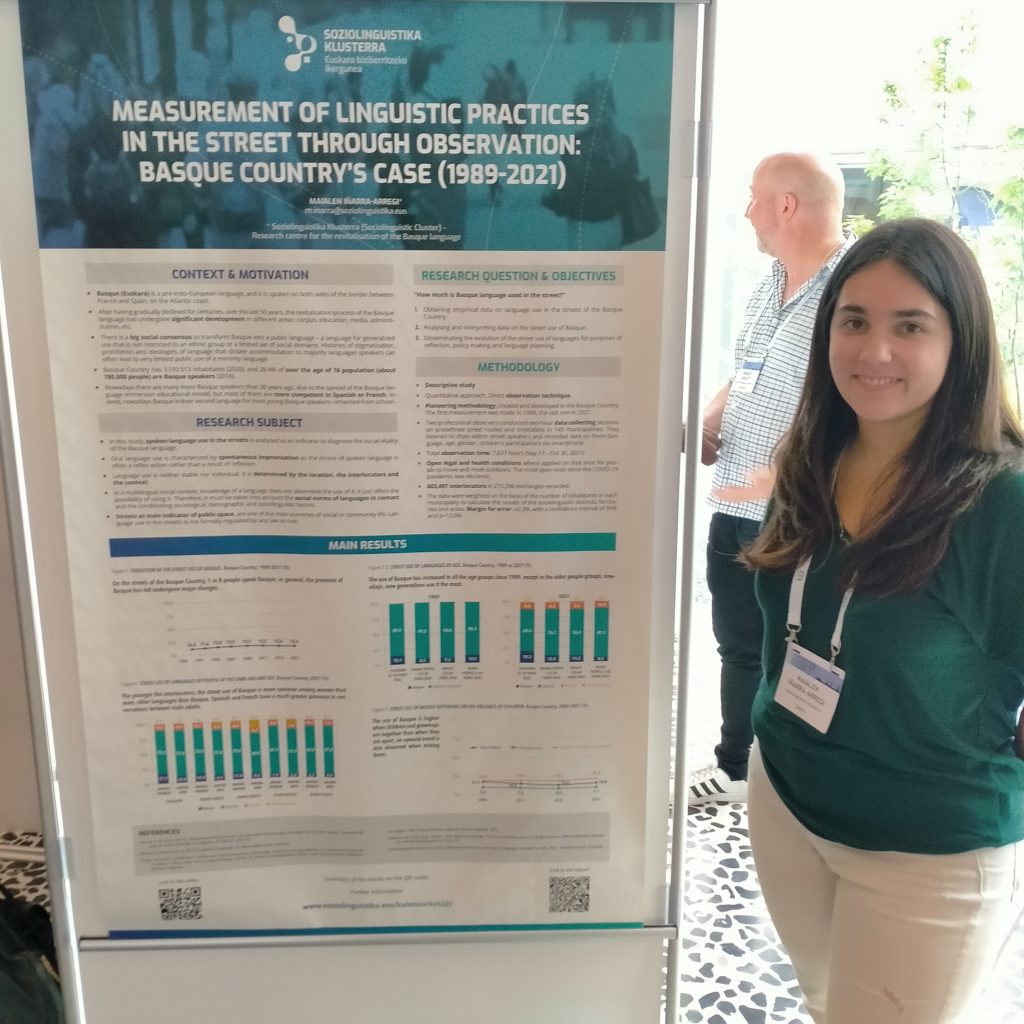
Soziolinguistika Klusterreko ikerlari Maialen Iñarrak bi komunikazio aurkeztu ditu, zehazki: batetik, Hizkuntzen erabileraren kale neurketaren 2021eko edizioaren emaitzak aurkeztu dira poster bidez. Bestetik, EAEko ikasleen eskolako euskararen erabileraren gaineko emaitzak eta gogoetak partekatu dira, Arrue ikerketaren baitakoak, hain zuzen.
Hauek dira bi aurkezpenen laburpenak:
Measurement of linguistic practices in the street through observation: Basque Country’s case (1989-2021)
In 2022 June, results of the 8th edition of the Measurement of the Street Use of Languages have been be published. This research quantifies language practices of the speakers in the public space through observation. “How much is Basque language used in the street?”; this is the main research question for this methodology. These data are gathered through observation, without asking anything to the speaker. That’s how we get real data about oral use. It’s particularly interesting to observe the language use in public spaces since people in the Basque Country are used to have social life outside. In this investigation, the information gathered is twofold. On the one hand, we collect in what language talks are carried out in the street (Basque, Spanish, French or another language). On the other hand, we get information about the speakers who are taking part in those talks: their age or gender, for example. That’s how we cuantify the influence of those variables in linguistic practices. This is a pioneering methodology, created and developed in the Basque Country. The first measurement was made in 1989, the last one in 2021. In every edition, we have made methodological adjustments. In the last one, for example, we collected data via smartphones. In this way, we got information easier, faster and more discreetly and we could follow closer the sample we were gathering every moment. In the last measurement in 2021, 145 towns of the whole Basque Country were analyzed and 515,260 individuals were observed (within 187,635 chats). Nowadays, this investigation is a crucial reference in the Basque Country in order to diagnose the social vitality of the Basque language. As a consequence, this methodology could be useful for investigating the situation of another language comunities.
Using a minorized language at school: the case of Basque (2011-2019)
During the last decades a great effort has been made to develop Basque-medium education. The spread of the Basque language in the education system has increased dramatically the proportion of Basque speakers among young people. Nevertheless, there is a great concern about the use of the language among the students. That’s how the Arrue Project started. The Arrue Project is a piece of research run from 2004 onwards between the Education Deparment of the Government of the Basque Autonomous Community (BAC) and Soziolinguistika Klusterra. Its aim is to study what language use is like in the school environment among students in the BAC. That is to say, their language use with teachers and classmates is analysed when they are either in the classroom or on the playground, taking into account data gathered by the Diagnostic Evaluation. The Diagnostic Evaluation is carried out by the Basque Government. They collect data from all the schools of the BAC where is offered the 4th year of Primary Education (9-10 years) and in the 2nd year of Secondary Education (13-14 years). Therefore, it is made possible to get information from almost all the students (over 18,000 in each year). The results of the first investigation were published in 2011, and the most recent data have been collected in 2019. The following research-questions have been designed in order to develop the main analysis: how has language use evolved since 2011? How can we impulse the use of it within the school environment? In this presentation, we will offer some elements to answer those questions.
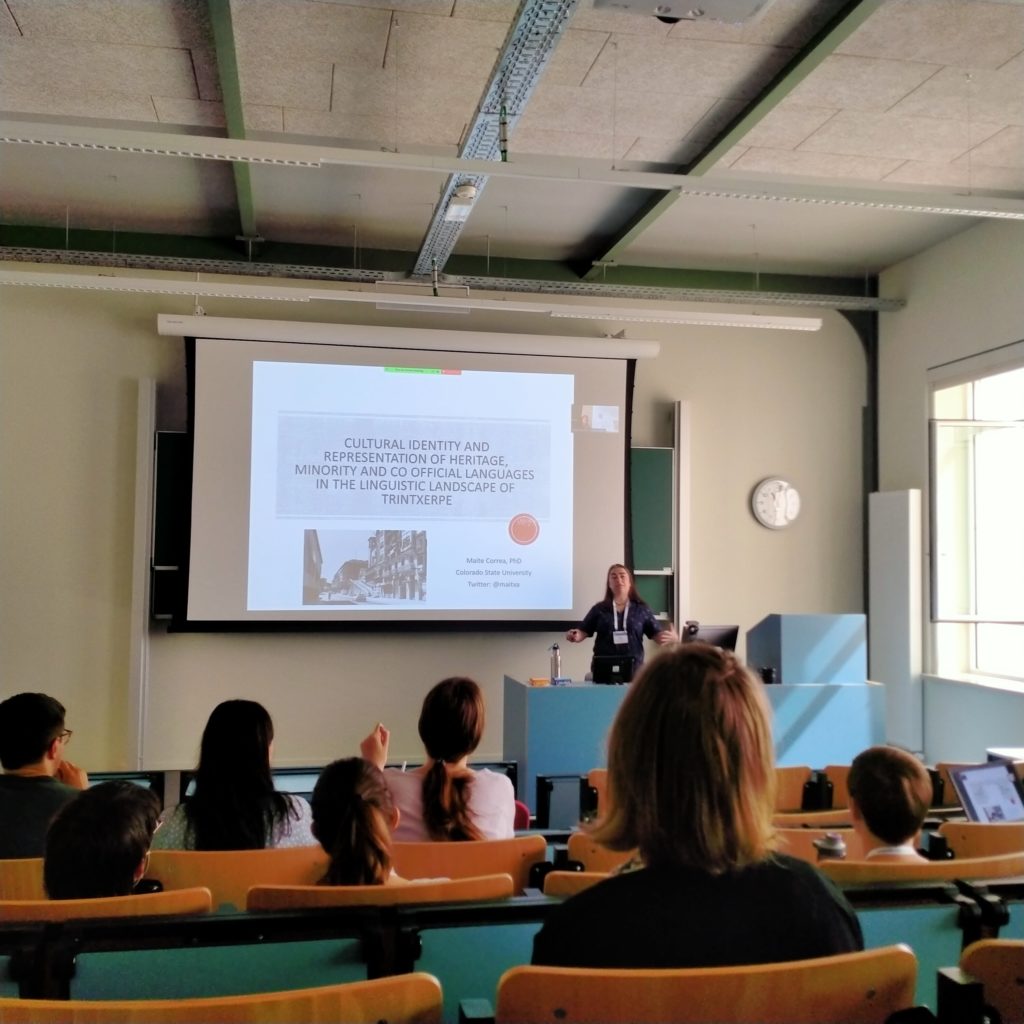
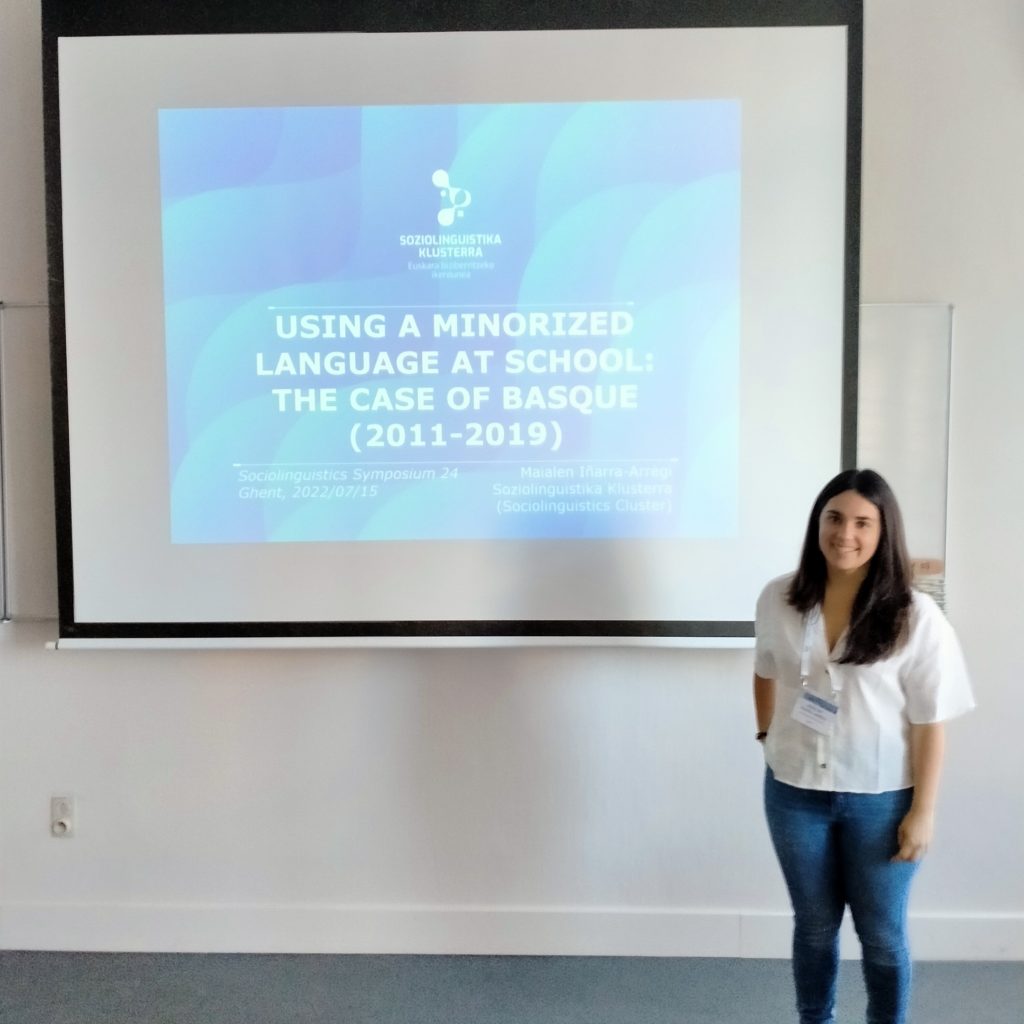
Soziolinguistics Symposium-aren hurrengo edizioa 2024. urteko ekainean ospatuko da Australiako Perth hirian, eta normalitatearen eta berrikuntzaren gaineko gogoetak egiteko aukera izango da hizkuntzaren eta gizartearen bueltan:
Innovation in language practice is increasingly celebrated, at times even romanticised – however this inadvertently invents the linguistic Other through exoticing the ordinary epistemologies of language. Conversely, trough a contemplating of what ordinariness entails or how it is imposed, the complex natures of communities, patterns, and hierarchies are often interrogated. Continued explorations of ordinariness and innovation across ecologies, landscapes, platforms, modalities, pedagogies, disability and nerodiverse cultures are required to further critical assessments for theory and application. Considerations of languages on the periphery – indigenous and migrant, minority and endangered – including engagement with everyday policy and practice, and development of innovative technologies, are particularly timely, in light of the UN’s International Decade of Indigenous Languages (2022-2032).
